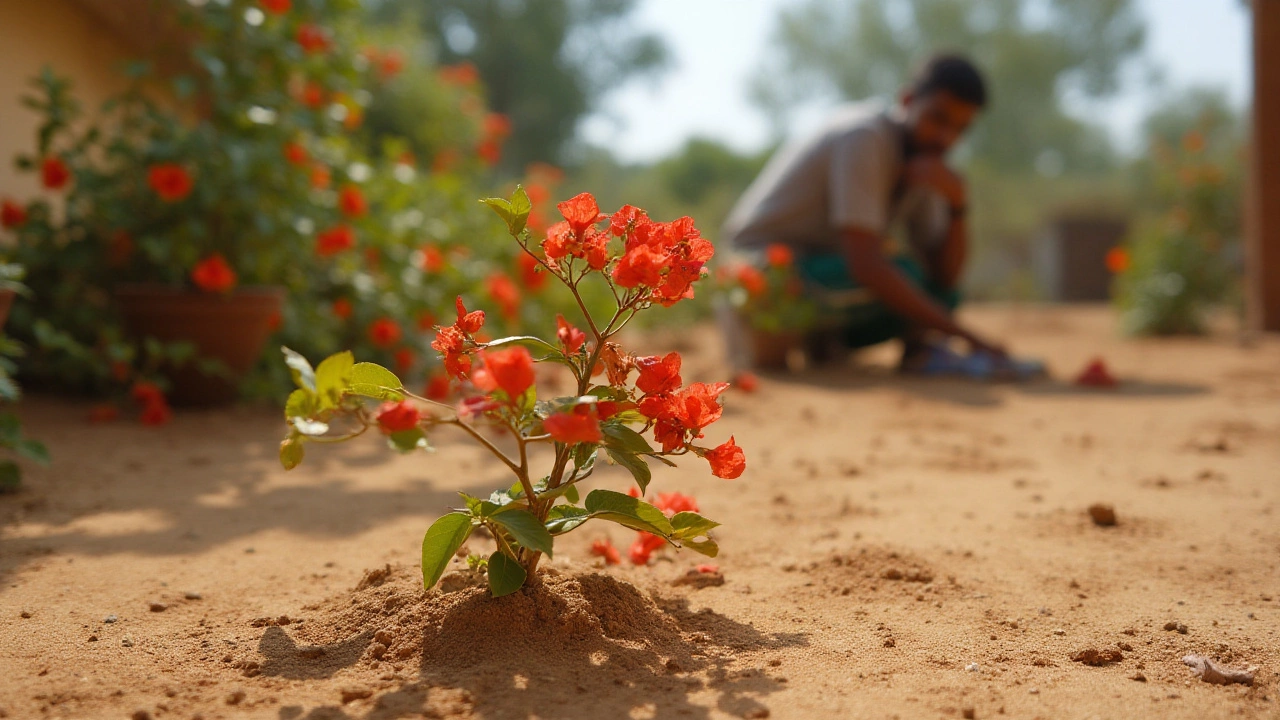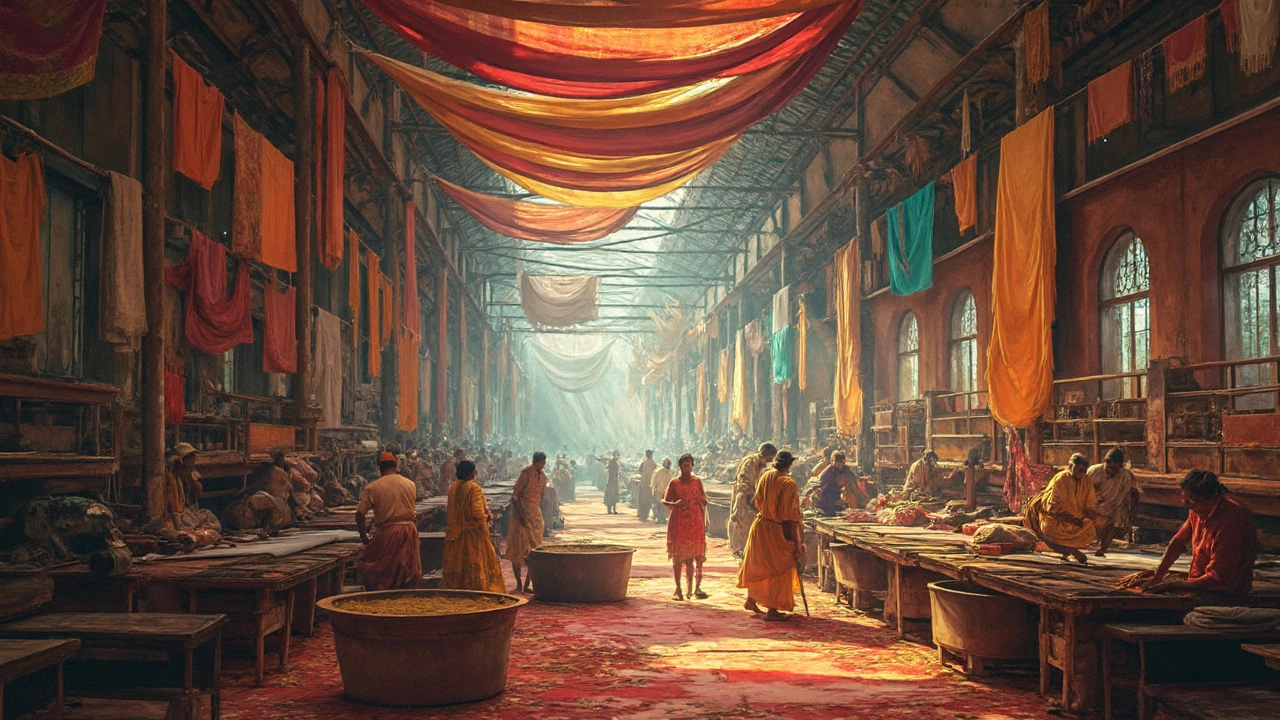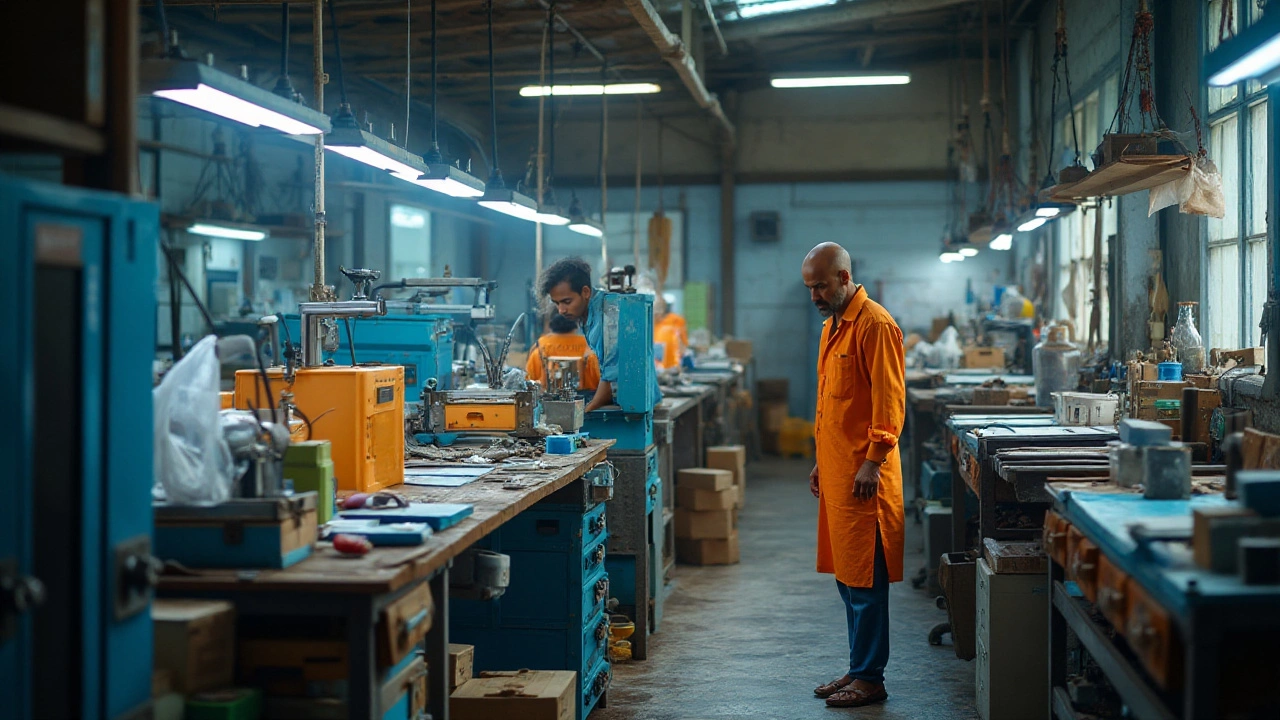How to Create Shade on a Small Balcony: Easy and Clever Ideas
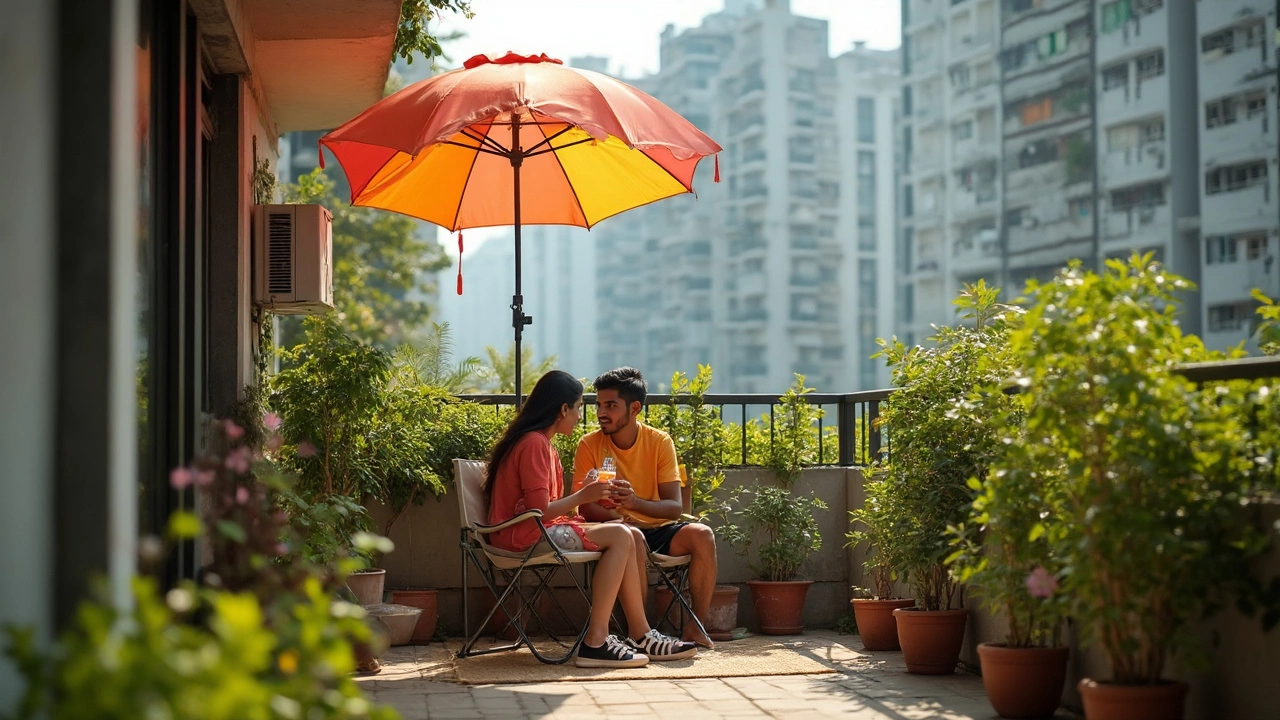
The smallest balconies have one big problem in the summer—standing outside feels like grilling yourself for dinner. You want a green corner, a place to sip chai or just let the kids play, but direct sun makes it all but impossible. Even worse, your baby plants can get scorched before you even get your iced coffee out.
Most folks think shade needs space or fancy gear, but that’s not the case, especially not on tight balconies like ours. It’s all about making smart use of walls, railings, and even laundry lines. From pop-up umbrellas that fit in a corner to foldable fabric screens that take seconds to set up, there are real, doable options out there. And you don’t have to be a carpenter—or annoy your landlord—to pull them off.
Forget those expensive or complicated solutions you see online. I’ll show you simple tricks, like using an old curtain or setting up balcony plants themselves as living shade. Trust me, I’ve tried these moves myself—when my son Ishaan and I wanted to turn our hot balcony into a comfy outdoor reading spot, we had to get creative, fast. Ready to give your balcony a cool upgrade? Here’s how to make it happen without blowing your budget or taking up all your precious space.
- Why Shade Matters in a Balcony Garden
- Space-Saving Shade Ideas for Tiny Balconies
- DIY Shade Solutions You Can Actually Pull Off
- Choosing the Right Shade Material: What Works Best
- Shade Tips for Renters (No Drills Needed)
- Keeping Your Balcony Cool and Your Plants Happy
Why Shade Matters in a Balcony Garden
Shade is a game-changer for any balcony garden, especially when you’ve only got a little patch to work with. When the sunlight blasts directly onto your balcony for hours, it doesn’t just make it tough for you to hang out—your plants can suffer just as much. Think crispy leaves, dried soil in a couple of hours, and flowers that won’t last more than a day or two.
The thing is, most popular balcony plants—herbs, ferns, lettuce—hate getting baked in the summer heat. Even succulents burn if it gets crazy hot. If you want your green corner to look alive after June, you need a bit of cover. On a small balcony, a little shade can bring down the temperature by 5 to 10°C—enough to stop sunburn for you and your plants.
A lot of people skip shade because they think it’s just about comfort. But it does more. With the right balcony shade, you’ll save water since the pots don’t dry out as fast. And less direct sun means less fading for outdoor furniture or those cute cushions you just bought. According to a study by the Indian Meteorological Department, balconies facing west can experience surface temperatures above 50°C in peak summers unless some shade is provided.
"Even partial shade makes a dramatic difference in keeping balconies cooler, protecting both plants and people from the worst of the afternoon heat." — Dr. Pankaj Malviya, Urban Horticulture Expert
If you love growing veggies like tomatoes or chillies, just an hour or two of too much sun can mess up your harvest. And for anyone with kids (like my son Ishaan, who’d rather use the balcony as a play zone than a sauna), a shady spot is a must. Honestly, a shady small balcony does double duty: it’s a chill hangout and a protected space for your garden to actually thrive, season after season.
Space-Saving Shade Ideas for Tiny Balconies
When you’re dealing with a small balcony, every inch counts. Bulky stuff just won't work. Luckily, there are some pretty smart ways to add balcony shade without turning the space into a storage closet. Here’s what actually works, tried and tested:
- Clamp-On Umbrellas: You don’t need a giant patio umbrella. These smaller options have a clamp at the end, so you can attach them straight to your railing or even a chair. When you’re done, unclamp and put them away. Perfect for renters and zero tools required.
- Retractable Awnings: There are small, lightweight awnings that you can install with adhesive hooks or brackets. Most options cover just enough area to shade a chair and a few plants. Some slide open when you need them and close flat against the wall when you don’t—super handy if your weather changes a lot.
- Outdoor Roller Blinds: These are like the blinds you use for windows but made for the outdoors. Mount them on the ceiling or upper part of your balcony. You pull them down only when the sun’s too strong. They’re not fancy, but they get the job done and are especially good if you want a bit of privacy too.
- Shade Sails: A durable fabric (usually polyester or canvas) attached to hooks or railings, pulled tight and angled to block the sun. A top pick if you don’t mind tying a few knots or using zip ties. You can overlap two for extra coverage if your balcony faces a couple of directions.
- Wall-Mounted Plant Hangers: Go vertical. Hang up small potted plants on wall brackets—they’ll eventually give you natural balcony shade as they grow. It’s like a green curtain that also cools the space down.
- Portable Folding Screens: These are basically mini room dividers made from bamboo or waterproof fabric. Stand them up, move them where you want shade, fold them back when you need extra space. Great if your balcony gets blasted only during certain hours.
If you’re wondering which option gets the most use, the clamp-on umbrella wins for pure flexibility. Research by outdoor living groups even shows that nearly 60% of people with a small balcony pick umbrellas or shade sails because they’re easy to move and store.
Here’s a quick comparison for space-saving options:
| Shade Option | Setup Needed | Best For |
|---|---|---|
| Clamp-on Umbrella | No tools | Flexible, quick shade |
| Retractable Awning | Hooks/Brackets | Permanent feel, decent weather |
| Roller Blinds | Ceiling hooks | Privacy & sun protection |
| Shade Sail | Hooks/Knots | Wide, angled coverage |
| Folding Screen | None | Temporary, movable shade |
Don’t forget: Always measure your tiny balcony before buying. Nothing is more annoying than struggling with gear that’s too big to even open fully. And if you’ve got curious kids like Ishaan bouncing around, look for stuff that’s sturdy but not heavy enough to squash toes.
DIY Shade Solutions You Can Actually Pull Off
If you want balcony shade fast—without dropping big bucks—these hacks do the job. No need to call in a contractor or buy tools you’ll never touch again. Everything here can be done over a weekend. Even if you rent, these won’t wreck your deposit.
- Old Bedsheets or Curtains: Got a faded bedsheet or curtain you don’t use anymore? Hang it across your balcony railing with sturdy clips or attach it to a couple of hooks. Instant DIY shade without new purchases. Just check if it’s colorfast so unexpected rain doesn’t turn your balcony into a color run.
- Retractable Clotheslines: You know those clotheslines you can pull out when needed? String one up across the width of your balcony. When it’s sunny, use it to hang up lightweight sheets or even a shade sail. When you don’t need it, just reel it back in. Wish I had figured this one out sooner—total game-changer.
- Garden Netting or Shade Cloth: These are made for balcony garden setups and come in rolls at garden stores. They block just enough sunlight to protect you and your plants but still let air flow through. Attach the netting using zip ties to your railing or hooks—super simple.
- DIY Bamboo Screen: If you want your small balcony to look tidy, try a bamboo privacy screen. Buy a pre-made roll from a hardware store, attach it to your railing using zip ties, and angle it to block the worst of the sun. It also adds a nice natural vibe and is surprisingly cheap.
Worried about weight and wind? Here’s a quick stat—the average curtain or garden netting weighs less than 1 kg per square meter, so you probably don’t need special supports. But if you get crazy wind where you live, add extra clips or a couple of bricks to weigh things down.
Kids turning everything into a play area, like Ishaan does? Use removable hooks or Velcro strips so that nothing becomes a permanent hazard. And when winter rolls around, just unclip everything and stash it in a closet—zero fuss.
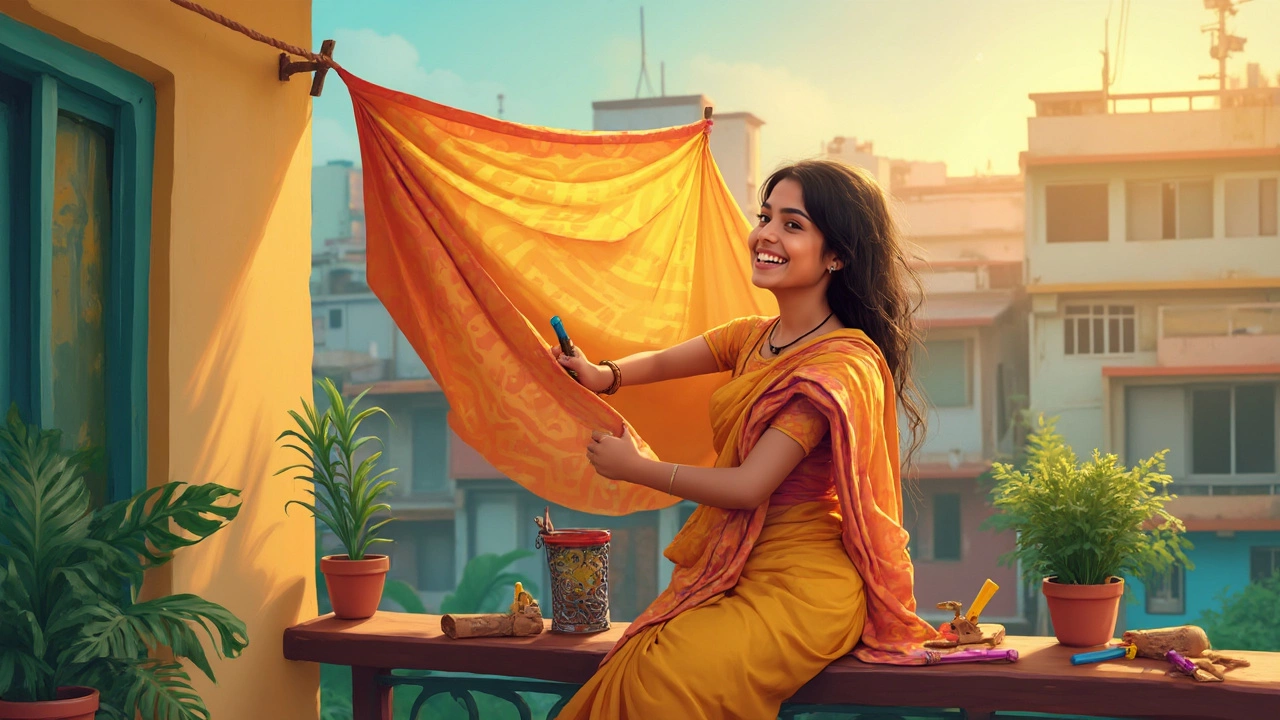
Choosing the Right Shade Material: What Works Best
When you’re dealing with a balcony shade on limited square footage, the type of material you pick really matters. There’s no one-size-fits-all answer, but you can narrow your choices by thinking about a few things: how much sun hits your balcony, how often you want to change things up, and how much effort you want to put into care and cleanup.
Here’s a lowdown of the most popular options you’ll see in stores or online and what they’re good for:
- Outdoor fabric (polyester or acrylic): This is super common for umbrellas and foldable shade sails. It blocks a lot of UV rays and holds up to rain and dust. If you go for a decent brand, you won’t get fading or mildew. Plus, it’s easy to snip to size for DIY projects. Go for fabric with a UPF rating of 30 or higher.
- Bamboo and reed screens: These are cheap, easy to roll out, and look cool if you’re into natural vibes. They let some breeze through and give partial shade, which is perfect if you want the area cooler but not pitch-dark. Downside? Heavy rain can break them down over a season or two.
- High-density polyethylene (HDPE) shade cloth: This mesh-like material is a favorite in balcony garden setups. It can block 70-90% of direct sunlight while letting air move—great for keeping both people and plants cool. It’s also lightweight, so it won’t weigh down your railing or supports.
- Canvas: It looks premium, is super sturdy, and gives serious shade—think market stalls or classic awnings. It’s heavier, though, so you’ll need solid hooks, and it can get pricey. Some canvases can be a pain to clean if birds decide your balcony is their new hangout.
Quick tip I learned early: if you’re trying to shade both yourself and your precious plants, look for "breathable" fabrics—never use plastic tarps or anything that traps heat. Those will fry your balcony garden. You want shade that lets air flow or even lets a bit of filtered sunlight through.
Sometimes, seeing the numbers helps when you’re making decisions. Here’s how common shade materials stack up on a few important points:
| Material | Blocks Sun (%) | Breathability | Rain Resistance | Cost (₹) |
|---|---|---|---|---|
| Polyester Fabric | 90 | Good | Excellent | 800-2000 |
| Bamboo/Reed | 60-70 | Excellent | Poor | 400-800 |
| HDPE Shade Cloth | 70-90 | Excellent | Good | 500-1500 |
| Canvas | 80-95 | Average | Good | 1200-3000 |
If you’re a balcony garden fan or just want a simple place to sit, consider mixing materials. A small HDPE cloth over the plant section and a roll-down reed screen where you sit works wonders. And remember, no shade solution lasts forever—expect to replace or refresh every couple of years, especially with all the sun and rain we get.
Shade Tips for Renters (No Drills Needed)
If you’re stuck renting and can’t poke holes in walls or railings, no sweat—you still have plenty of smart balcony shade options. Forget about drilling, hammering, or risking that security deposit.
The best weapon in a renter’s arsenal? Moveable, non-permanent gear. Here are some go-to shade ideas that work for any small balcony and keep your landlord happy:
- Freestanding Umbrellas: Compact, weighted base umbrellas fit in one corner and cover your chill-out spot. Many are designed to tilt so you can chase the shade as the sun moves. Easy to fold down at night or if the wind picks up. Most cost less than a fancy dinner out.
- Clip-On Shade Sails: Look for ones with simple hooks or clips (not screws!) that grab onto your balcony railing. These are super popular in apartment complexes for a reason—they’re cheap, flexible, and come in lots of colors. Go for UV-resistant fabric if you want something that lasts all season.
- Tension Rod Curtains: Just like shower curtains, but for your balcony garden. A tension rod fits snug between two sides of your balcony and lets you hang weather-resistant fabric or even an old bedsheet. Roll it up or slide it back when you want sun.
- Outdoor Roller Blinds: No installation needed—some brands use rope ties or suction cups to stick to glass doors and railings. Pull them down when the heat’s on, roll them away when you want a breeze.
- Potted Plant Screens: If you’ve got long planters or tall pots, arrange them in a row where the sun’s at its worst. Fast-growing plants like bamboo, palms, or monsteras create living shade, look awesome, and double as privacy screens.
Don’t want to invest in new stuff? No judgement. Repurpose what you’ve got—an old bedsheet held up with clothespins and string makes the sun bearable until you find your permanent fix. Just check that anything you use outdoors is okay getting wet or a bit dirty.
If you’re one of those number-crunchers who likes to compare your options, here’s a quick cheat sheet:
| Shade Solution | Cost (approx) | Ease of Setup | Reusable? |
|---|---|---|---|
| Freestanding Umbrella | $25-$70 | Super easy | Yes |
| Clip-On Shade Sail | $10-$30 | Easy | Yes |
| Tension Rod Curtain | $15-$40 | Very easy | Yes |
| Roller Blind (no drill) | $15-$50 | Easy | Yes |
| Potted Plant Screen | $20-$60 | Easy (just arrange pots) | Yes |
So yeah, you can block brutal sun and get the cool, shady outdoor living space you want—even if your landlord is watching. Just make sure whatever you use is secure so nothing moves around when the wind kicks up. Problem solved, no drills needed.
Keeping Your Balcony Cool and Your Plants Happy
If you’ve ever walked out onto your balcony garden mid-afternoon and felt like you stepped onto a frying pan, you’re not alone. Sun-drenched balconies in cities heat up fast—sometimes 5–10°C hotter than the street, according to a 2018 study in the Journal of Urban Climate. Even heat-loving veggies like tomatoes can wilt if the sun beats down too hard. For small balconies with limited airflow, this becomes a real problem for both you and your plants.
"Keeping your outdoor space shaded isn’t just about comfort—strong sun can cause soil to dry out twice as fast and burn delicate leaves," says horticulturist Dr. Meera Sharma of the Urban Greeners Institute.
So, what actually works to bring the temp down and save your plants from sun stress?
- Balcony shade sails or lightweight umbrellas can cut the heat on the balcony surface by up to 12°C. Believe it or not, a simple white cotton sheet draped from a clothesline and pegged in place does the trick if you don’t want to invest in fancy gear.
- Grouping your plants together gives them a microclimate boost. When you cluster pots, the humidity rises slightly, which helps keep leaves from frying and slows down soil evaporation.
- Pick light-colored pots and patio furniture. Dark stuff absorbs heat and makes things even toastier than they already are. Even covering the ground with a balcony shade mat helps—avoid black or navy mats.
- If you’re out all day, set up a basic auto-watering system, like a drip line from a reused water bottle. Water early in the morning so roots soak it up before peak heat.
- Use vertical gardens—tall plants like bamboo or thick climbers like money plant on railings throw afternoon shade for ferns or herbs below.
Here’s a quick look at what difference shading can make for a small balcony in midsummer:
| Condition | Surface Temp at 2pm | Soil Moisture |
|---|---|---|
| No Shade | 47°C | Dry in 2 hours |
| With Shade Sail | 35°C | Moist for 6 hours |
Try a combo of these tips for best results. A bit of shade, some smart plant placement, and easy watering hacks together can turn your small balcony from a heat trap into a real hangout spot—even when the sun’s giving it all it’s got.

